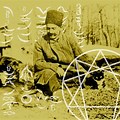What Did the Crow Tribe Believe In: Discover The Beliefs!
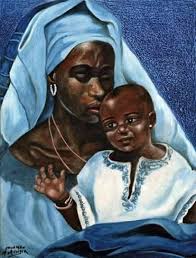









What Did the Crow Tribe Believe In: Discover The Beliefs!
The Crow Tribe, also known as the Apsáalooke, held a strong belief in the interconnectedness of life, emphasizing the significance of nature, spiritual entities, and ancestral traditions.
Their cultural practices included sacred ceremonies, vision quests, and a deep respect for the environment and wildlife, which were central to their understanding of the world and their place within it.

The belief system of the Crow Tribe was centered around:
For example, the Crow Tribe participated in the Sun Dance, a ritual that sought to ensure cosmic harmony and personal visions.
The spirituality of the Crow Tribe continues to be a vital aspect of their cultural identity, bridging past and present through enduring traditions and beliefs.
The Crow Tribe spiritual practices allowed them to maintain a deep connection to the natural world, seek harmony in their environment, and attain wisdom from the unseen forces around them.
Key Takeaway
Origins and Creation Stories
The Crow Tribe believed in a singular creation story that detailed the emergence of the world and their place within it.
This narrative holds that in the beginning, there was a formless, endless dark space, and within it dwelled Old Man Coyote. He, through his actions, brought forth the Earth, the stars, and all living beings.
The Crow people see themselves as the direct descendants of Old Man Coyote, thus forming a deep connection between themselves and the natural world.
This creation story not only explains the origins of the world but also serves as a cultural foundation for the Crow Tribe, shaping their beliefs, values, and understanding of their place in the universe.
The story continues to be passed down through generations, preserving the tribe’s cultural identity and spiritual connection to the land.
Spiritual Connection to Nature
The Crow Tribe’s spiritual connection to nature is rooted in a profound reverence for the land and a deep kinship with the natural world.
For the Crow people, nature is not just a provider of physical sustenance, but also a source of spiritual guidance and inspiration.
The land, rivers, mountains, and animals are all seen as sentient beings that deserve respect and gratitude.
The Crow Tribe’s spiritual beliefs are deeply intertwined with the rhythms of the natural world, and their ceremonies and rituals reflect this connection.
Through their traditional practices, such as the Sun Dance and the vision quest, the Crow people seek to maintain harmony and balance with nature, acknowledging their dependence on the land and the importance of preserving it for future generations.
This spiritual connection to nature continues to be a fundamental aspect of the Crow Tribe’s cultural identity.
Ancestral Spirits and Guardians
Ancestral spirits and guardians play a significant role in the Crow Tribe’s spiritual beliefs, embodying the enduring connection to their cultural heritage and the wisdom passed down through generations.
- Protectors of the Tribe: Ancestral spirits are believed to watch over and protect the Crow Tribe, offering guidance and support in times of need.
- Preservers of Tradition: Guardians are seen as custodians of the tribe’s traditions, ensuring that the cultural practices and values are upheld and respected.
- Intercessors with the Divine: Ancestral spirits and guardians are intermediaries between the earthly realm and the spiritual world, facilitating communication and invoking blessings for the tribe.
The Crow Tribe’s reverence for ancestral spirits and guardians reflects their deep respect for their heritage and the interconnectedness of the past, present, and future in their spiritual beliefs.
Ceremonies and Rituals
Ceremonies and rituals hold a central role in the spiritual practices of the Crow Tribe, embodying their deep connection to tradition and the divine.
These sacred practices are essential for maintaining harmony and balance within the tribe, as well as for seeking guidance from the spiritual realm.
The table below highlights three significant ceremonies and rituals of the Crow Tribe:
| Ceremony/Ritual | Purpose | Symbolism |
|---|---|---|
| Sun Dance | Renewal and healing | Represents the renewal of the world and the interconnectedness of all living beings |
| Sweat Lodge | Purification | Symbolizes rebirth and the cleansing of the body, mind, and spirit |
| Vision Quest | Seeking spiritual guidance | Represents a rite of passage and the individual’s connection to the spiritual world |
These ceremonies and rituals are deeply ingrained in the cultural fabric of the Crow Tribe, providing a profound sense of identity and spiritual connectedness.
This deep spiritual connectedness extends to the power of vision quests.
The Power of Vision Quests
Exploring the significance of vision quests within the spiritual practices of the Crow Tribe, the quest for spiritual guidance continues to play a pivotal role in their cultural and religious traditions.
The power of vision quests lies in their ability to foster a deep connection with the spiritual realm and provide individuals with profound insights and revelations.
Within the context of the Crow Tribe, vision quests serve as a means of seeking personal direction, spiritual growth, and a deeper understanding of one’s place in the world.
Through this sacred practice, individuals embark on a journey of self-discovery, seeking visions and guidance from the spirit world to navigate life’s challenges and make important decisions.
Conclusion
The Crow tribe held deep spiritual beliefs rooted in their connection to nature and ancestral spirits. Their ceremonies and rituals were central to their way of life, and the power of vision quests played a significant role in their spiritual practices.
The Crow tribe’s beliefs were woven into the fabric of their culture, shaping their understanding of the world and their place within it. Ultimately, their spiritual connection to the natural world was a guiding force in their lives.
7 Reasons Historic Christianity Rejects the Book of Enoch
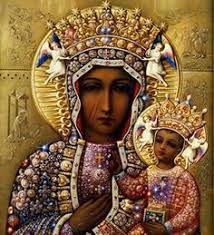








7 Reasons Historic Christianity Rejects the Book of Enoch
The Book of Enoch has fascinated historians, theologians, and other interested readers for over two millennia. Some call it “1 Enoch,” as there are other ancient writings named after the patriarch. Others refer to it as “Ethiopic Enoch” because the only complete version of it is in that language. Whatever a person calls the book, it’s one of the most popular rejected documents in Jewish and Christian history.
The intrigue over the Book of Enoch is partly due to the historical figure named in its title. Genesis includes an incredible description of Enoch in its fifth chapter, which includes a genealogy that mentions his extraordinary faith. The description says Enoch “walked” in fellowship with his God (5:22, 24a). It also reveals that Enoch never physically died but “was not, for God took him” (5:24b, ESV).
In the modern era, the Book of Enoch has captured the imagination of science-fiction fans because of the unusual characters and creatures in the book, like the Watchers, as well as conspiracy theorists who believe orthodox Judaism and the Christian church have unjustly rejected its teachings.
1. The Enoch that Genesis 5 mentions didn’t write the book
Scholars and historians agree that the Book of Enoch is a compilation of writings from different authors. Historians date the oldest sections of the book to 300 B.C. They date the youngest sections to 100 A.D. [1] Therefore, the book’s composition occurred 3,000 to 4,000 years after the historical figure Enoch walked the earth.
The authors of the book wanted readers to believe that the man named Enoch mentioned in Genesis 5 wrote its contents, but it’s obvious that he didn’t. The reason the authors used Enoch’s name is that they knew it would attract a lot of readers who they wanted to persuade to adopt their view on a certain social matter related to priestly marriage (more below).
| Book | Events/Written | Difference |
|---|---|---|
| Nehemiah | ca. 445-410 / 457-444 B.C. | within 50 years |
| Malachi | ca. 470-460 / 457-444 B.C. | within 50 years |
| 1 Enoch | Before 3,000 / 300-100 B.C. | over 3 millennia |
Most scholars believe that the last Old Testament books were Nehemiah and Malachi. Both books were written within decades of the events they describe, and their authors are directly connected to their stories. In contrast, the book of Enoch was written more than a century after Nehemiah and Malachi and the events it describes occurred thousands of years earlier.
2. The Book of Enoch’s popularity doesn’t mean God inspired it
People have found the Book of Enoch fascinating since before the birth of Jesus Christ. For example, the Dead Sea Scrolls, which date to centuries before Christ, included the book. The caves at Qumran, where people found the scrolls contained 11 fragments of the book. Yet, their presence doesn’t imply its inspiration, as many non-biblical writings were among the scrolls.
Over 2,000 years later, people are still interested in the Book of Enoch. People can spot some of the creatures and events it describes in popular culture. For instance, the Nephilim are found in science-fiction television series like The X-Files and video games like Payday 2. Similarly, the Watchers, are found in modern science-fiction novels like James Rollins’ The Bone Labyrinth.
Contrary to the opinions of some conspiracy theorists, the Christian church didn’t decide what books God inspired and which ones he didn’t. The motivation for the selection process didn’t come from consolidating power in the church or the Roman Empire’s political structure. Instead, leaders discovered what books God inspired and compiled them to form the Bible.
The Book of Enoch didn’t demonstrate the marks of inspiration, which is why no historic branch of the Christian faith includes it in their Bible. Although a few early church fathers initially advocated for using the book in churches, mostly because Jude referred to it (see below). Some later changed their minds after learning more about it.
3. The purpose of Enoch doesn’t align with the Bible
The Book of Enoch’s purpose is multifaceted because it has various writers, each with unique concerns. Yet, scholars are in general agreement that its purpose isn’t to teach about the God of the Bible, the patriarch mentioned in Genesis 5, or to apply biblical truth to the lives of its readers. This article will discuss the purpose of this section of the Book of Enoch as an example.
The first section of the book, which consists of 36 chapters, is called The Book Watchers. The view that some scholars find persuasive is that the purpose of this section is to argue for a certain view of priestly marriage, which was a controversial issue in the Jewish community about 300 years before Christ.
Some Jews at the time thought priests should only marry the virgin daughters of other clergymen. Advocates believed that confining marriage to a small group of holy servants would keep the office pure. Others thought it was permissible for priests to marry women outside that small demographic.
Some scholars theorize that the author of the Book of Watchers section supported the view that priests should marry the daughters of others priests. Yet, instead of attacking his opponents directly, he condemns the Watchers for participating in inappropriate marriages and sexual relationships. [2]
4. Jews rejected the book as inspired
Sometimes in popular media, ancient books that God didn’t inspire are referred to as “lost,” implying that the people in earlier centuries or millenniums didn’t know about them. The concept of “lost books of the Bible” makes for intriguing titles for television shows, yet it’s not rooted in historical fact.
The word “canon” comes from a Greek word meaning a reed or cane. It refers to something that is measured. Today, people commonly use the word to describe the officially accepted books of the Bible, i.e. which ones showed the marks of Godly inspiration and were, therefore, deemed authoritative. A book that is in the Bible is called “canonical.” A book that isn’t is called “non-canonical.”
The Jewish community, before the time of Christ, knew of the Book of Enoch and rejected it as inspired because it didn’t meet the standard of other inspired Scripture. The book wasn’t lost; it was rejected.
However, people didn’t necessarily ignore the book because it didn’t fit the criteria for inclusion into the Hebrew or Old Testament canon. For example, fragments from the book were found among the Dead Sea Scrolls (see above). Yet, the Septuagint, the Greek translation of the Old Testament, which has non-canonical books like the Apocrypha or Deuterocanon, didn’t include it.
5. Christians rejected the book as inspired
Just as Jewish tradition rejects the Book of Enoch as canonical, every major historic branch of Christianity rejects it, including the Roman Catholic Church, the Eastern Orthodox Church, and the largest branches of Protestantism, including the Baptist, Pentecostal, Reformed, Methodist, Lutheran, and Presbyterian traditions.
The historical branches of the Christian faith didn’t lose the book; they knew it, read it, and rejected it as inspired. At least one New Testament writer refers to the book (i.e. Jude), but that alone isn’t enough to meet the strict standards of inspiration.
Jude 14-15 reads, “It was also about these that Enoch, the seventh from Adam, prophesied, saying, ‘Behold, the Lord comes with ten thousands of his holy ones, to execute judgment on all and to convict all the ungodly of all their deeds of ungodliness that they have committed in such an ungodly way, and of all the harsh things that ungodly sinners have spoken against him'” (ESV).
Based on Jude’s reference of the book, some early church fathers like Irenaeus and Tertullian, who mistakenly assumed that the patriarch from Genesis was the author, accepted it as canonical. Others, like Origen and Clement of Alexandria, accepted the book at one time but eventually rejected it when they learned more about it.
The Ethiopian Orthodox Tewahedo Church and the Eritrean Orthodox Tewahedo Church are the only confessing Christian churches that accept the Book of Enoch as biblical.
6. Jude’s quotation from Enoch doesn’t mean the book is inspired
New Testament scholar Thomas Schreiner writes, “We do not need to conclude, however, that the entire book is part of the canon of Scripture. Jude probably cited a part of 1 Enoch that he considered to be a genuine prophecy. Perhaps he referred to Enoch because the adversaries treasured the work, and thereby he used their own ammunition against them.” [3]
7. The New Testament influenced Enoch, not vice versa
Some claim that some of the Book of Enoch’s teachings align with the New Testament, so it should be considered inspired.
Wikipedia’s description of the book contains examples of this incorrect line of thinking. For example, one claim says, “There is little doubt that 1 Enoch was influential in molding New Testament doctrines about the Messiah, the Son of Man, the messianic kingdom, demonology, the resurrection, and eschatology.” [4]
The writers who made this claim, and others like it, exaggerate its influence. One scholar writes that “this view has been increasingly questioned, especially since the discovery of the Qumran fragments.”
In fact, many scholars have made a more persuasive argument is that editors later inserted New Testament teaching into the Book of Enoch. Passages that reflect NT teaching “are later (Christian) insertions into [Enoch], and that it was the NT which influenced them rather than vice versa.” [5]
in Genesis
8 Breathtaking Mountain Monasteries Around the World
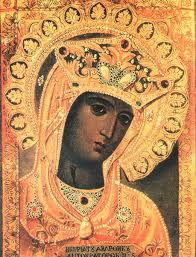









8 Breathtaking Mountain Monasteries Around the World
For centuries, religious monks and nuns have retreated from popular society to lead isolated lives of solitude, self-awareness and religious devotion.
On occasion, this has led religious followers to build monasteries in some of the most isolated locations on the planet, from the Himalayas to the sheer cliff faces of Bhutan, China and Greece.
Here are 8 of the most isolated mountain monasteries in the world.
1. Sumela, Turkey
Sumela is a Byzantine monastery dedicated to the Virgin Mary, perched on the edge of a sheer cliff-face 300 meters high in Turkey’s Altindere National Park. According to tradition, the monastery was founded by Barnabas and Sophranius, two Athenian priests who visited the region in the 4th century AD. The structure seen today is believed to have been founded in the 13th century AD.
The monastery is reached via a narrow, steep path and staircase through the forest, initially chosen for defensive purposes. It stands at some 4,000 feet high. Many of the manuscripts and artefacts found at the monastery have since been catalogued and are now on display at the Ankara Museum and the Ayasofya Museum in Istanbul.
2. Holy Trinity Monastery, Greece
Holy Trinity Monastery stands atop a towering sandstone buttress amongst the iconic Meteora rock formations of Greece. It was built in the 13th century as an Eastern Orthodox site of reverence, and is one of dozens of monasteries in the mountainous region.
The monastery can only be reached by climbing more than 140 steps and some 1,300 feet. But up until the 1920s, ropes and nets were used to scale the rock formation. The structure featured in the 1981 James Bond film, For Your Eyes Only, and is recognised by UNESCO as a World Heritage Site.
3. Key Monastery, India
The Key Monastery sits in the remote Spiti Valley of Himachal Pradesh, in northern India. It’s one of the most isolated Buddhist monasteries in the world, found at more than 4,000 metres about sea level in the hills of the Himalayas.
The monastery is thought to have been built in the 11th century, and is replete with paintings, ancient manuscripts and Buddha iconography. Over the centuries, it has endured natural disasters, invasions and theft, and still it houses around 300 people at any one time.
4. Taung Kalat, Myanmar
This Buddhist monastery is found on the extinct volcano, Mount Popa, in Myanmar. According to legend, the mountain is home to countless holy spirits known as ‘nats’ and possesses an array of holy properties.
Sitting more than 700 metres above sea level, Taung Kalat is reached via a snaking path of 777 steps. It is now a popular site of pilgrimage in Myanmar, with thousands of Buddhists and tourists alike visiting each year.
5. Tiger’s Nest, Bhutan
Tiger’s Nest monastery, also known as Paro Taktsang, is one of the most iconic sites in the isolated South Asian country of Bhutan. A celebrated holy site, the monastery is built along the mountains of the Paro Valley. It’s said that Guru Rinpoche, a Buddhist master, was carried on the back of a tiger to the site of Paro Taktsang, where he meditated in a cave for three years, three months, three weeks, three days and three hours.
Built in the late 17th century, Paro Taksang remains a functioning Buddhist monastery to this day. The structure is some 10,000 feet above sea level, so it’s unsurprisingly difficult to reach. Some of the way can be travelled on mules, but it’s nonetheless a substantial trek.
6. Hanging Monastery, China
Built on a cliff face at the bottom of Hengshan Mountain, China’s Hanging Monastery is thought to have been constructed in the late 5th century. To build it, holes were drilled into the cliff, through which poles were inserted to sustain the structure. It was restored in the 20th century.
Atypically, the Hanging Monastery supports Buddhist, Taoist and Confucianist followers alike. For centuries, monks would have lived in the Hanging Monastery in China in near total isolation from the outside world. This isn’t so much the case now: the site is popular amongst tourists and receives thousands of visitors every year.
7. Katskhi Pillar, Georgia
The Katshki Pillar in Georgia is a towering stone structure, home to a tiny site of religious reverence. Thought to have first been used as a pagan site, the pillar-top became home to a Christian church in around the 7th century.
Although the monastery eventually fell into ruin, it was restored and expanded in the 20th and 21st centuries and a monk named Maxime Qavtaradze made it his monastic home. Other monks have moved in since, and they regularly scale the rock tower via a metal ladder to say prayers. The monastery is closed to the public.
8. Montserrat, Spain
Officially titled Santa Maria de Montserrat, Montserrat Monastery is a medieval abbey and monastery sitting high among the mountains of Catalonia, Spain. It is thought an early Christian chapel stood on the site in the 9th century AD, while the monastery itself was founded in 1025. The monastery was sacked by Napoleon’s troops in 1811, and attacked again during the Spanish Civil War. Since then, it has been seen as a symbol of Catalan nationalism and protest.
Today, the Montserrat Monastery still functions with dozens of monks living there at any one time. Visitors can explore the historic monastery as well as the Montserrat Museum.
Ethiopian Bible is oldest and most complete on earth










Ethiopian Bible is oldest and most complete on earth
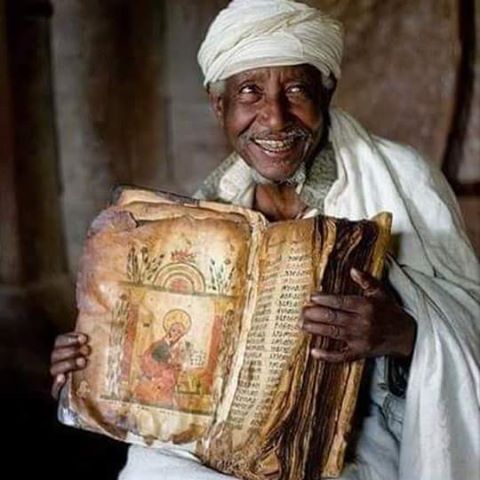
World’s first illustrated Christian Bible discovered at Ethiopian monastery
The world’s earliest illustrated Christian book has been saved by a British charity which located it at a remote Ethiopian monastery.
The incredible Garima Gospels are named after a monk who arrived in the African country in the fifth century and is said to have copied them out in just one day.
Beautifully illustrated, the colours are still vivid and thanks to the Ethiopian Heritage Fund have been conserved.
Abba Garima arrived from Constantinople in 494 AD and legend has it that he was able to copy the Gospels in a day because God delayed the sun from setting.
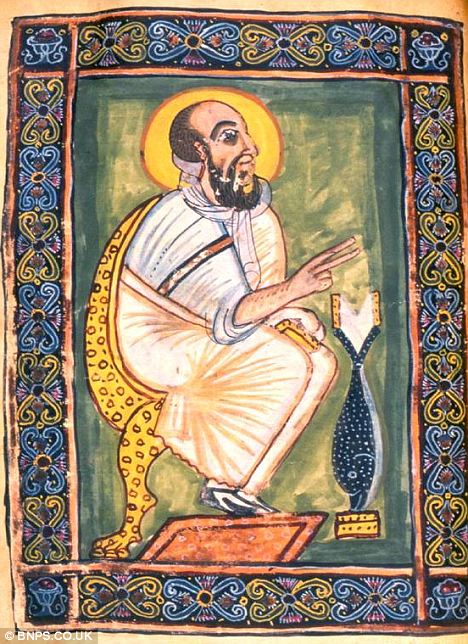 A page from the Garima Gospels – the world’s oldest Christian book found in a remote monastery in Ethiopia
A page from the Garima Gospels – the world’s oldest Christian book found in a remote monastery in Ethiopia The incredible relic has been kept ever since in the Garima Monastery near Adwa in the north of the country, which is in the Tigray region at 7,000 feet.
Experts believe it is also the earliest example of book binding still attached to the original pages.
The survival of the Gospels is incredible considering the country has been under Muslim invasion, Italian invasion and a fire in the 1930s destroyed the monastery’s church.
They were written on goat skin in the early Ethiopian language of Ge’ez.
There are two volumes which date from the same time, but the second is written in a different hand from the first. Both contain illustrations and the four Gospels.
Though the texts had been mentioned by the occasional traveller since the 1950s, it had been thought they dated from the 11th century at the earliest.
Carbon dating, however, gives a date between 330 and 650 – which tantalisingly overlaps the date Abba Garima arrived in the country.
So the first volume could be in his hand – even if he didn’t complete the task in a day as the oral tradition states.
The charity Ethiopian Heritage Fund that was set up to help preserve the treasures in the country has made the stunning discovery.
It was also allowed incredibly rare access to the texts so experts could conserve them on site.
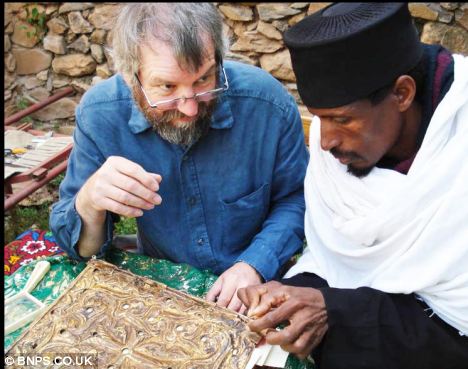
It is now hoped the Gospels will be put in a museum at the monastery where visitors will be able to view them.
Blair Priday from the Ethiopian Heritage Fund said: "Ethiopia has been overlooked as a source of these fantastic things.
"Many of these old Christian relics can only be reached by hiking and climbing to remote monasteries as roads are limited in these mountainous regions.
"All the work on the texts was done in situ and everything is reversible, so if in future they can be taken away for further conservation we won’t have hindered that.
"The pages had been crudely stitched together in a restoration in the 1960s and some of the pages wouldn’t even turn. And they were falling to pieces.
"The Garima Gospels have been kept high and dry which has helped preserve them all these years and they are kept in the dark so the colours look fresh.
"This was the most astounding of all our projects and the Patriarch, the head of the Ethiopian Church, had to give his permission.
"Most of the experts did the work for nothing.
"We are currently undertaking other restoration programmes on wall paintings and religious texts.
"We believe that preserving Ethiopia’s cultural heritage will help to increase visitor revenue and understanding of the extraordinary history of this country."
Articles-Latest
- Koran burning conviction sparks fury as blasphemy law 'returns to UK'
- Robert Francis Prevost - Pope Leo XIV
- Pope Francis' death follows recent health challenges. Here's what we know about how he died.
- Easter April 2025 - international Celebrations
- The Rule of the twelve psalms -Worthy is the Lamb
- Religion in Africa Before Christianity and Islam
- 6 The Origin of Yahweh
- Dumo Di Milano
- What Did the Crow Tribe Believe In: Discover The Beliefs!
- 7 Reasons Historic Christianity Rejects the Book of Enoch
- 8 Breathtaking Mountain Monasteries Around the World
- Ethiopian Bible is oldest and most complete on earth
- Muhammad Muhammad was a prophet and founder of Islam.
- World Day of the Poor – SVP Christmas Campaign 2024
- Pope Francis to open 5 sacred portals on Christmas Eve — for a ritual that’s never been done before
- The 144,000 in Revelation
- Over 73 dead bodies 'used for meditation', 600 crocs in a pond, found in two Thai temples
- Occultism: Western Occult Tradition
- What is a Mudra
- Blood Sacrifices: Ancient Rituals of Life and Death
Articles-Most Read
- Home
- Let There Be Light
- Plants that feel and Speak
- The Singing Forest
- The Singing Forest-2
- Introduction
- Meditation
- Using Essential Oils for Spiritual Connection
- Heaven Scent
- Plants that Feel and Speak-2
- Purification
- Making the Spiritual Connection
- Anointing
- Essential Oils: The unseen Energies
- The Sanctity of Plants
- The Aroma Of Worship - Introduction
- The Aroma Of Worship-Foreward
- Methods Of Use
- Spiritual Blending
- Handling and Storage




